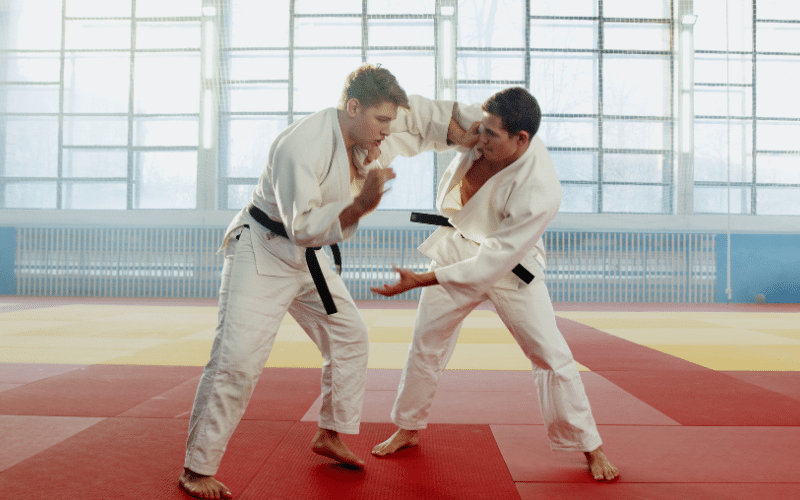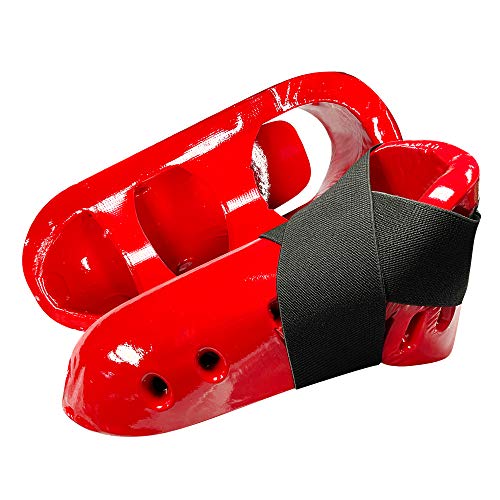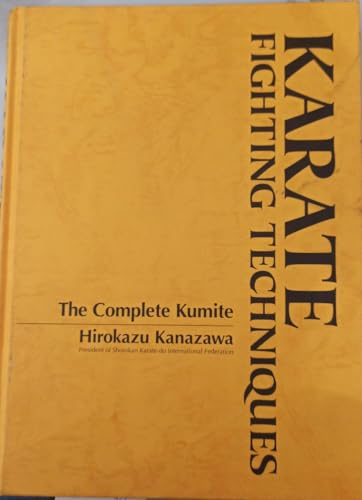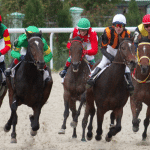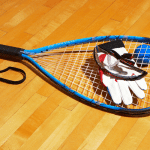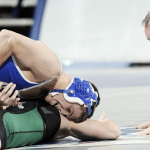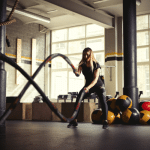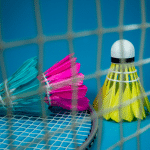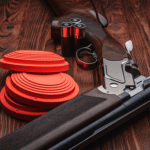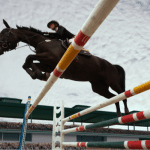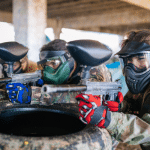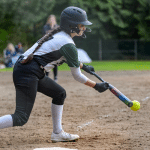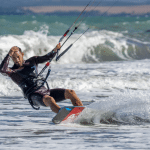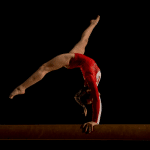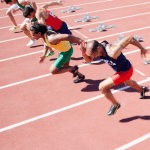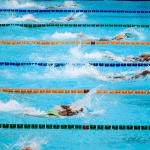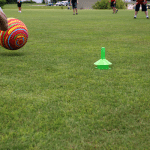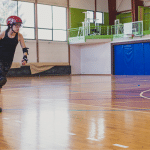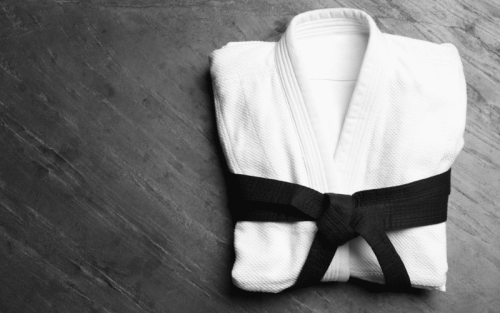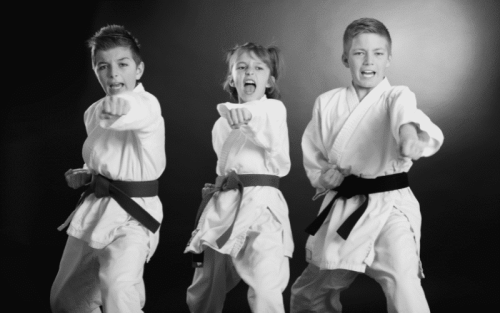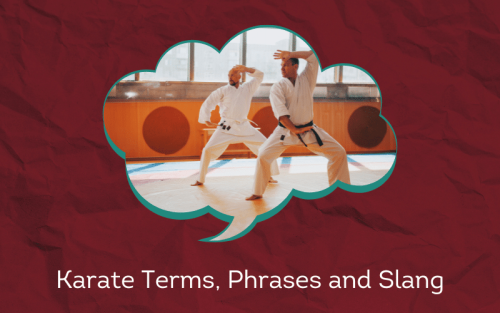Got the spirit of a karateka warrior but not sure what you’ll need for battle?
Sharpen your skills and spirit with the ultimate Karate equipment list!
Suit up, tie that belt, it’s not just a fight; it’s a journey of self-mastery!

For Karate Karatekas:
- Karate Gi (uniform)
- Belt (colored according to rank)
- Mouthguard and Sparring Gear (for kumite practice)
- Hand Pads and Foot Pads (optional)
For Coaches:
- Punching Bags and Mitts
- First Aid Kit
- Scoreboards and Timers (for matches)
- Educational Materials (for teaching katas and techniques)
For Facilities:
- Dojo (training space) with Adequate Floor Space
- Mats or Traditional Wooden Floor
- Mirrors (for form practice)
- Equipment Storage
- Changing Facilities
Equipment for Karatekas
#1 Karate Gi (Uniform)
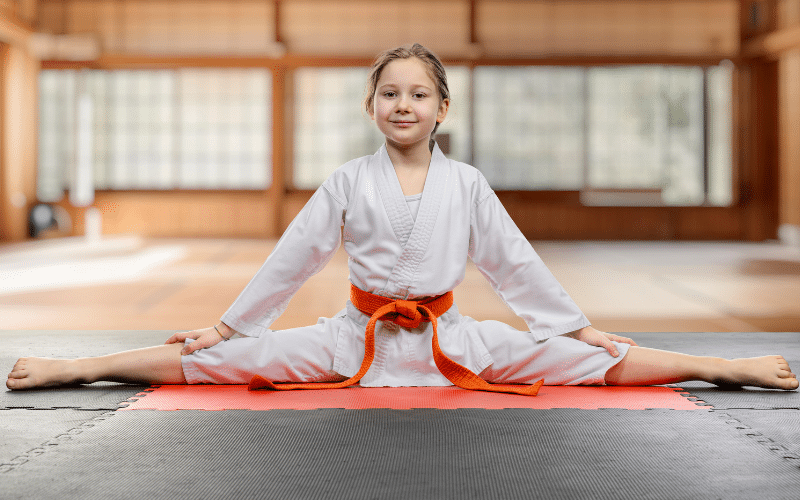
The Karate Gi is the traditional uniform that portrays respect for the art and discipline of Karate. Lightweight yet durable, it allows for fluid movement and stands up to rigorous training, while the white color symbolizes purity and dedication to the practice.
#2 Belt (Obi)

The belt represents the karateka’s rank and progress, with different colors symbolizing the advancement of skill. It’s an essential component of the Gi, showing the wearer’s level of expertise and commitment to the martial art’s journey.
#3 Mouthguard and Sparring Gear
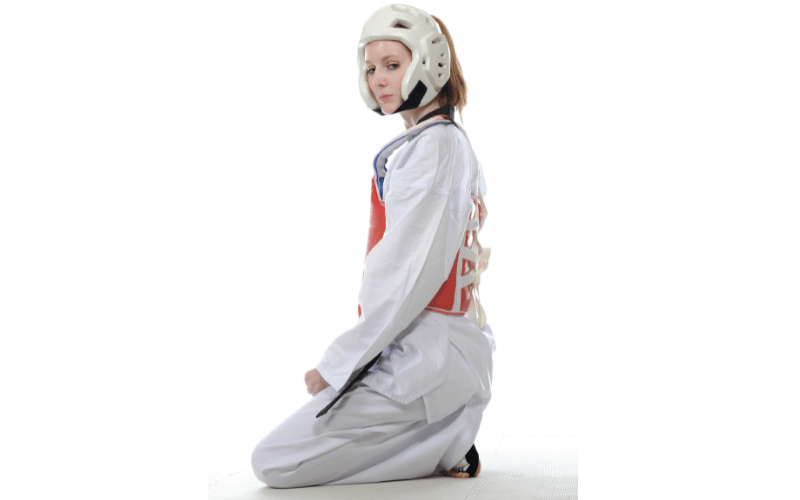
For kumite, or sparring, safety is important. A mouthguard protects from dental injuries, and sparring gear, including headgear and body protectors, safeguards against accidental strikes. This equipment enables practitioners to engage fully and fearlessly in combat practice.
#4 Hand Pads and Foot Pads
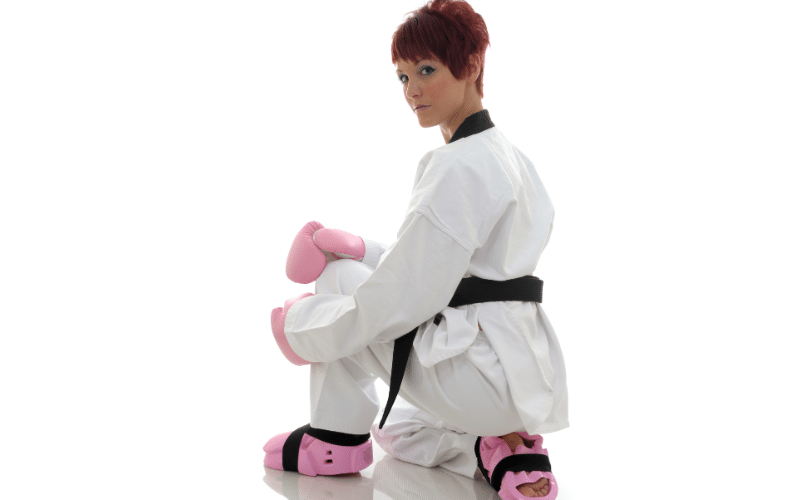
Hand and foot pads are optional but recommended for sparring. They provide protection for both the wearer and the opponent, minimizing the risk of bruises and injuries during kumite sessions, allowing karatekas to practice more confidently and safely.
Equipment for Coaches and Teams
#1 Punching Bags and Mitts
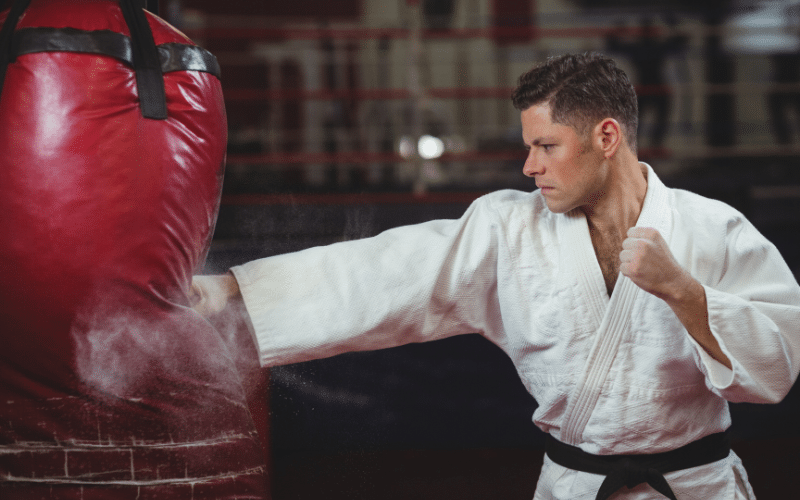
Punching bags and mitts are staples in karate training, allowing practitioners to hone their punching and kicking techniques. They absorb impact effectively and provide realistic resistance, essential for developing power, speed, and precision in striking skills.
#2 First Aid Kit

A well-stocked first aid kit is imperative for coaches to ensure the safety and welfare of karate practitioners. It prepares teams to promptly address injuries such as cuts, bruises, or strains that may occur during intense training and sparring sessions.
#3 Scoreboards and Timers
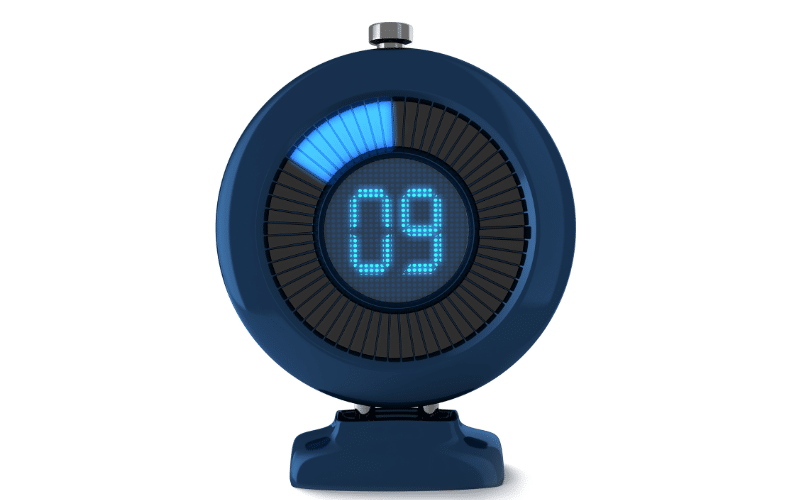
Scoreboards and timers are a necessity during karate matches to keep track of scores and time remaining in rounds. They maintain the flow of the competition and provide clarity for competitors, judges, and the audience, enhancing the structure and professionalism of the event.
#4 Educational Materials
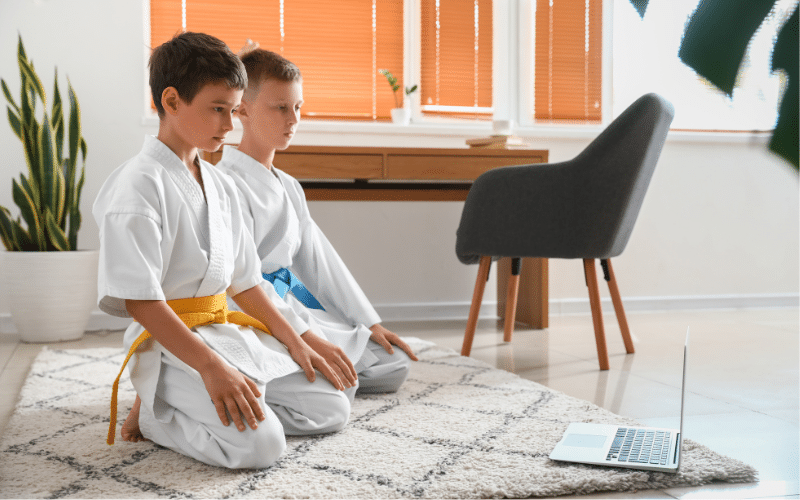
Educational materials, including books and videos on katas and techniques, are crucial for coaches to effectively teach karate. They serve as reference tools to demonstrate proper form and execution, enriching the learning experience and ensuring consistent training methodology.
Equipment for Facilities
#1 Dojo (training space) with Adequate Floor Space
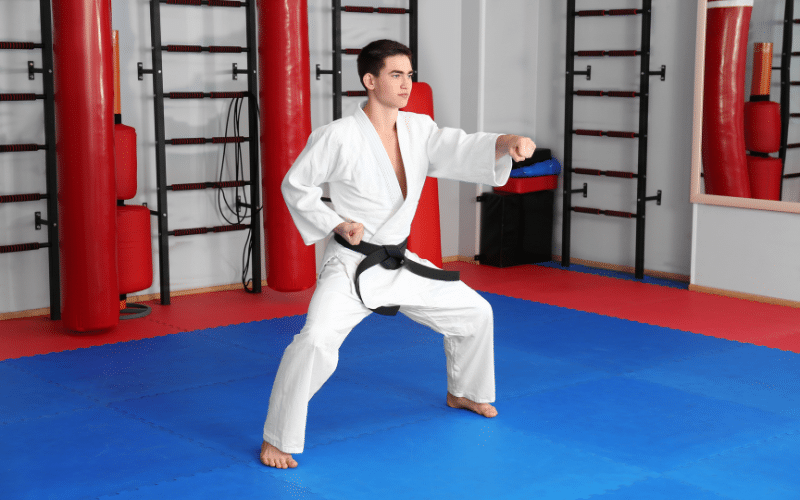
A dojo provides practitioners with a dedicated space to refine their skills, follow traditions, and honor the martial art. The adequate floor space is crucial for safe movement, allowing individuals to perform kata and sparring without constraints, thereby preserving the integrity of karate practice.
#2 Mats or Traditional Wooden Floor
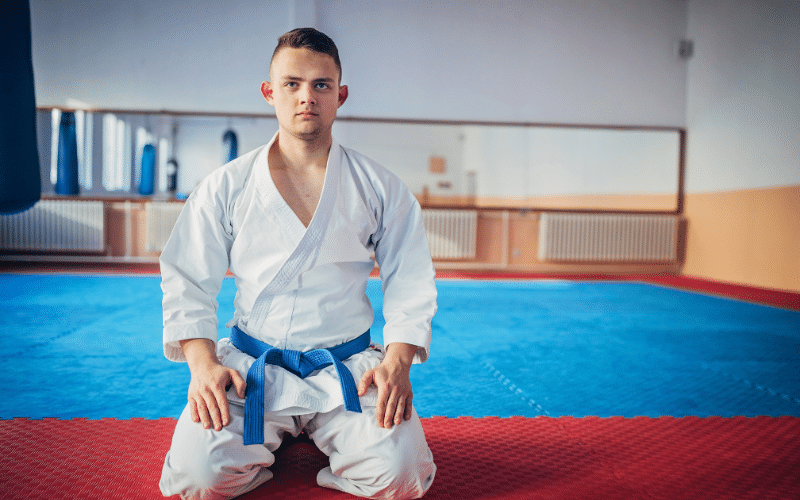
Mats or a traditional wooden floor absorb impact and provide a stable surface, reducing the risk of injury during falls and takedowns. They are vital for practitioners to safely execute karate techniques and movements, especially when engaging in rigorous kumite or practicing advanced kata.
#3 Mirrors (for form practice)
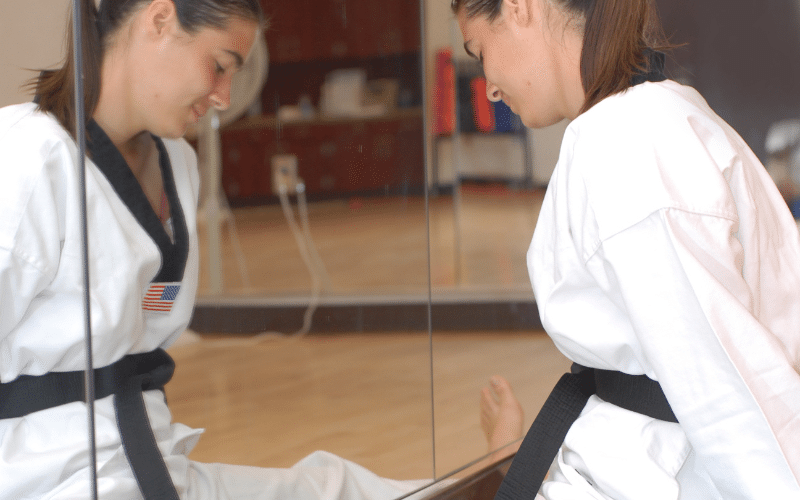
Mirrors are essential in a karate dojo for practitioners to observe and correct their form. They provide immediate visual feedback, facilitating self-correction of stance, technique, and posture during kata practice, which is imperative for personal development and mastery of the art.
#4 Equipment Storage
Proper equipment storage helps maintain an organized and safe training environment. It ensures that gear such as sparring equipment, targets, and training aids are readily accessible when needed and safely stowed away to prevent clutter and accidents in the dojo.
#5 Changing Facilities
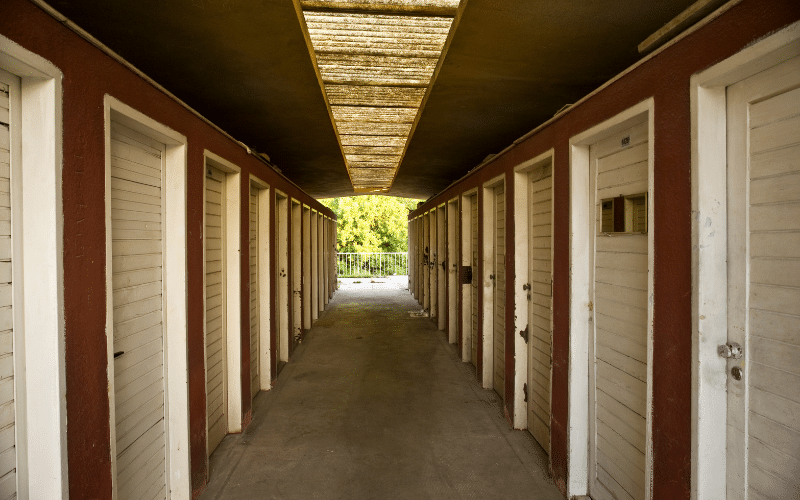
Changing facilities provide a private and secure area for practitioners to change before and after training. This convenience supports personal hygiene, encourages participation, and respects the tradition of wearing a clean and appropriate gi for each practice, contributing to the disciplined atmosphere of karate.
Understanding the proper equipment can also help in preventing common karate injuries, which is crucial for every practitioner.

FAQ
What is the equipment you need to play Karate?
A gi, which is the traditional Karate uniform, and a belt are the equipment you need to play Karate. These are essential for all participants for practice and competition.
What is the most important equipment in Karate?
The gi, or Karate uniform, is the most important equipment in Karate because it allows for free movement and symbolizes the art’s tradition and discipline.
What is a recommended list of Karate equipment for beginners?
Here’s a recommended list of Karate equipment for beginners: a lightweight gi, a white belt (for those starting out), and mouthguard. These items provide comfort and protection during initial training.

